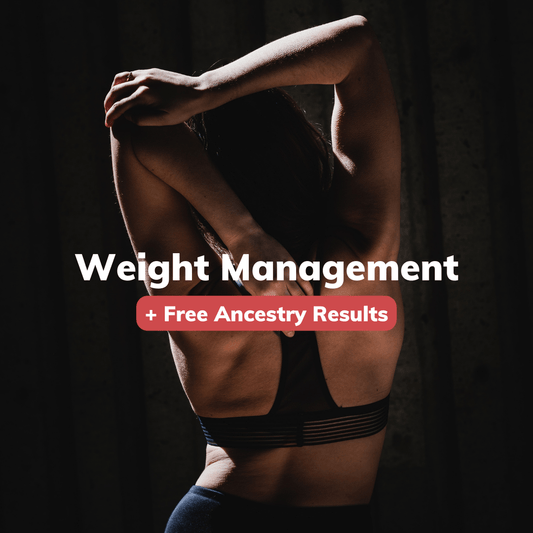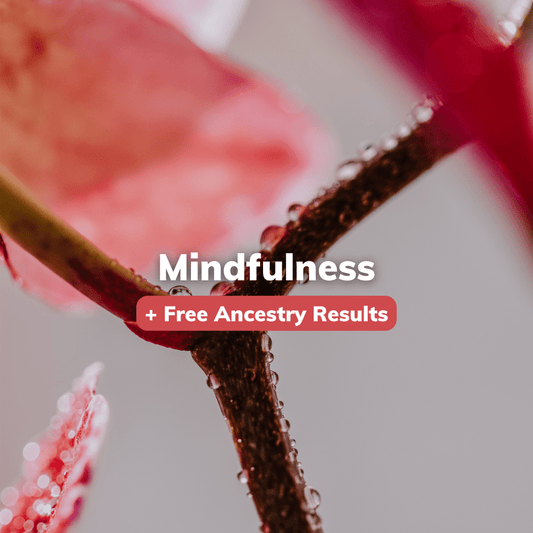
Acne vulgaris - not a hygiene problem, but a disease
BioCertica Content TeamAuthor: Jonine Moller
Acne Vulgaris is a common, chronic skin disease. It involves fair follicle inflammation, increased local bacteria, and sebum overproduction, and a lot of the times because of your DNA [1, 2].
The most common acne lesions are whiteheads and blackheads. They are present in mild acne. Both are due to clogged pores of hair follicles. The formation of papules, pustules, nodules, and cysts may be involved in more severe forms of acne [3].
The prevalence of acne is extremely high. Almost every teenager experiences acne to some degree [4, 5]. Puberty usually brings about its development. However, the disease is not limited to teenagers. It has been reported that acne occurs in up to 10% of people of all ages [3].
The onset of acne is closely related to increased sebum production. Increased sebum production is favorable for the bacteria involved in the inflammatory process causing the disease [3].
Acne may cause physical discomfort, but the negative impact extends much further. Self-esteem and self-image are commonly negatively affected. This can lead to a decreased social life, depression, and anxiety [3, 6]. Permanent scars can also be caused by acne if it is severe and not adequately treated [5].
If your parents suffered from acne, your chances are already higher. There is a heritable genetic predisposition to suffer from acne [3, 5]. As such, several gene variants have been found to associate with severe acne [1].
Whether your skin is dry, oily, or in between is also genetically determined. Sebum production determines your skin’s oiliness. Higher sebum production is associated with a greater risk for acne [3, 5].
Non-genetic factors that may increase your risk of severity of acne include [3, 5, 7]:
- Unhealthy diet
- Obesity
- Stress
- Increased/frequent sweating
- Wearing of garments or any gear that blocks skin airflow
- Make-up use
- Excess sunlight
- Endocrine disorders, or pregnancy
Numerous specifics regarding diet and acne are debated. Associations are not consistent. However, it seems that high dairy and chocolate intake or a high glycemic load diet may worsen symptoms [5, 8]. Symptoms might improve with increased fiber and antioxidant intake [5]. Treatment for acne includes many options. These range from general skincare to topical agents and prescription drugs.
Cleansing the skin is an important aspect of acne management. However, both over-cleansing and the use of harsh cleansers could cause excessive skin drying. Excessive drying leads to overcompensation of the skin’s oil/sebaceous glands. Washing make-up brushes and pillowcases that accumulate dirt and dead skin cells is also recommended [5].
Topical agents are effective in treating mild to moderate acne. Counteracting the involvement of bacteria is an important factor in treatment. The use of antibiotics (topical and oral) is thus a mainstay treatment [5].
Topical agents containing benzoyl peroxide and salicylic acid are available through prescription but also over the counter. Creams, lotions, masks, cleansers, and other skincare products can include these agents. It works well in combination with other treatments but may also be effective if used alone [5].
Vitamin A-derived medications (retinoids) are well known for their effectiveness in treating acne. The medicine may be in creams, lotions, or gels. Topical retinoids may have adverse effects, including red skin rash, dryness, itching, and stinging [5].
Azelaic acid and Dapsone are other topical agents that may be effective in improving acne. If topical medications aren’t sufficient to adequately clear acne, oral medication may be necessary [5].
Retinoids can also be taken orally. The most effective and widely used is isotretinoin. Accutane or Roaccutane are well-known brands of this type of medication. These drugs remain the go-to for severe cases of acne.
Isotretinoin is the answer for cases that may be less severe but do not respond to other treatments [9]. Although very effective, it may come with serious side effects [5, 7]. Therefore, it should not be a first-line treatment [9].
If taken while pregnant or 30 days before conception, it can cause a miscarriage or defects to the baby [7]. For this reason, the use of oral contraceptives is highly recommended or necessitated for women of child-bearing age [9].
The most common side-effects of isotretinoin (with % prevalence) are [9, 10]:
- Inflammation of:
- Lips (41 - 98%)
- Outer eye membrane (pink eye) (35%)
- Gut and mouth (40%)
- Vestibule (50%)
- Dry lips (100%)
- Eczema (65%)
- Peeling of the upper layer of skin (20%)
- Facial redness (65%)
- Nose bleeds (35% - 47%)
- Fragile skin and decrease in skin thickness (25%)
- Rough, dry, cracking, or scaling skin (50%)
- Hair loss (5%)
- Itching (25% - 38%)
For other recognized but less common side-effects, see here. It needs to be considered that some side effects can persist even after taking the drug has ceased. These include hair loss, inflammatory bowel disease, joint pain, degenerative disc disease, and bone disease [10]. For six months after ending treatment, you should avoid chemical peels or waxing [9].
It is not guaranteed that acne dissipates with age. Knowing your genetic predisposition towards acne could aid in your dermatologist’s decision towards treatment options. Have your risk tested as a part of BioCertica’s skincare toolkit.
References:
[1] He, L., Wu, W. J., Yang, J. K., Cheng, H., Zuo, X. B., Lai, W., Gao, T. W., Ma, C. L., Luo, N., Huang, J. Q., Lu, F. Y., Liu, Y. Q., Huang, Y. J., Lu, Q. J., Zhang, H. L., Wang, L., Wang, W. Z., Wang, M. M., Xiao, S. X., … Zhang, Y. P. (2014). Two new susceptibility loci 1q24.2 and 11p11.2 confer risk to severe acne. Nature Communications, 5, 2870. https://doi.org/10.1038/ncomms3870
[2] Navarini, A. A., Simpson, M. A., Weale, M., Knight, J., Carlavan, I., Reiniche, P., Burden, D. A., Layton, A., Bataille, V., Allen, M., Pleass, R., Pink, A., Creamer, D., English, J., Munn, S., Walton, S., Willis, C., Akhras, V., Alexandroff, A., … Barker, J. N. (2014). Genome-wide association study identifies three novel susceptibility loci for severe Acne vulgaris. Nature Communications, 5(May), 1–6. https://doi.org/10.1038/ncomms5020
[3] Heng, A. H. S., & Chew, F. T. (2020). Systematic review of the epidemiology of acne vulgaris. Scientific Reports, 10(1), 1–29. https://doi.org/10.1038/s41598-020-62715-3
[4] Bhate, K., & Williams, H. C. (2013). Epidemiology of acne vulgaris. British Journal of Dermatology, 168(3), 474–485. https://doi.org/10.1111/bjd.12149
[5] Mohiuddin, A. (2019). A Comprehensive Review of Acne Vulgaris. Journal of Clinical Research in Dermatology, 6(2), 1–34. https://doi.org/10.15226/2378-1726/6/2/00186
[6] Ahmed, A. A. A., Nayaf, M. S., & Ahmed, H. S. (2020). Psychosocial impact of acne vulgaris among adolescent Iraqi patients. Systematic Reviews in Pharmacy, 11(5), 800–803. https://doi.org/10.31838/srp.2020.5.118
[7] Sutaria, A. H., Masood, S., & Schlessinger, J. (2021). Acne Vulgaris. In StatPearls (Vol. 3, Issue 4). http://www.ncbi.nlm.nih.gov/pubmed/29083670
[8] Juhl, C. R., Bergholdt, H. K. M., Miller, I. M., Jemec, G. B. E., Kanters, J. K., & Ellervik, C. (2018). Dairy intake and acne vulgaris: A systematic review and meta-analysis of 78,529 children, adolescents, and young adults. Nutrients, 10(8), 1–13. https://doi.org/10.3390/nu10081049
[9] Layton, A. (2009). The use of isotretinoin in acne. Dermato-Endocrinology, 1(3), 162–169. https://doi.org/10.4161/derm.1.3.9364
[10] Brzezinski, P., Borowska, K., Chiriac, A., & Smigielski, J. (2017). Adverse effects of isotretinoin: A large, retrospective review. Dermatologic Therapy, 30(4), 2–7. https://doi.org/10.1111/dth.12483



